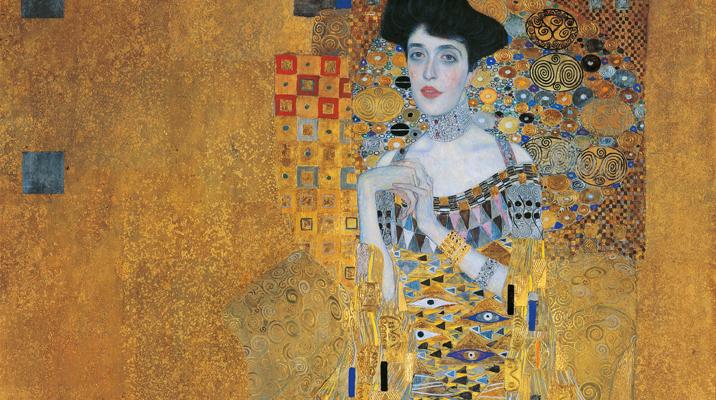Golden Age: Gustav Klimt

According to Gustav Klimt (1862-1918), 'All art is erotic.' It is an arguable proposition, but in his case, it is unequivocally true.
Klimt as a man and a painter was highly attuned to the sensual - it was his great subject. He found eroticism everywhere he looked: in women especially, both as subjects and as lovers (he had many), but also in nature - the beech trees and water of his favourite retreat, the Attersee lake in Upper Austria - and in clothes, line and colour, especially gold. Few artists were as uninterested in the mundane or in everyday appearances as Klimt. Even when he painted a forest, he turned it into a picture of a rhythm beaten out by the trees' trunks.
Klimt found pattern in everything, and his depictions of textiles, which appear as though painstakingly made from mosaic tiles, have proved a rich source for Turnbull & Asser and fit perfectly with the company's artist-inspired AW16 'The Artist and the Architect' collection (others painters include Hockney, Dalí and Picasso). Klimt's golds and rich blues in paintings, such as his 1902 portrait of his long-term lover Emilie Flöge and the kaleidoscopic refractions of the cloak that covers the lovers in his celebrated The Kiss (which, according to some, shows Klimt and Flöge), find new expression in a number of T&A's ties and tuxedos this season, (in particular, the Abstract Elgar Tux). The fabric designer has not taken a simple motif but sought to share Klimt's palpable delight in sensuous richness.
It is a coincidence but perhaps no surprise that Klimt was a contemporary of Sigmund Freud, his fellow Viennese, and his paintings of women in particular are full of the unconscious - a mixture of femmes fatales, of yearning and of worship. Klimt himself was a supplicant: he liked to wander around in a full-length smock beneath which he was naked, and his fascination with women was insatiable - at his death, he was facing no fewer than 14 paternity suits.
Klimt was born into an artistic family; his father was a gold engraver - a career his younger brother was to follow, too - and Gustav received a conventional training, becoming a successful but fairly conservative painter of murals in glamorous late 19th-century Vienna. Indeed, in 1888 he was awarded the Golden Order of Merit by the emperor Franz Josef. In the early 1890s, however, fearful of becoming an establishment figure, he changed direction and became a founding member of the Vienna Secession group of experimental artists and a figurehead for the city's avant-garde.
His new paintings combined the headiness of symbolism and the dreaminess of allegory with an Art Nouveau richness and sinuousness. They didn't always go down well. In 1894, he was commissioned to paint three figures representing Philosophy, Medicine and Jurisprudence on the ceiling of the Great Hall of the University of Vienna - when they were unveiled, however, they were condemned as pornographic.
Since he couldn't help himself, he stopped trying to hold back. He had always eschewed café society and he gave up public commissions, too, largely to paint portraits of the women who fascinated him and who, in turn, were fascinated by him. Among them was Adele Bloch-Bauer, a society hostess he painted twice as a wan creature floating in a sea of gold (see main image). She is less a person than a Byzantine icon - inspired by the mosaics he saw on a trip to Ravenna ¬- a face atop a glittering swirl, a mixture of the real and the abstract. The two portraits are among the 30 most expensive pictures ever sold (at US$135m and US$88m).
With gold, a material usually used only sparingly in paintings, Klimt had found his ideal means of expression and he produced a series of works - The Kiss, The Embrace, Judith and The Head of Holofernes - that both acknowledge his family and are, in effect, oversized jewels. In them, painted faces emerge like gemstones from settings of chased, embossed and patterned gold. 'Whoever wants to know something about me ought to look carefully at my pictures,' Klimt said. It is, though, unclear what attracted the artist more: the flesh-and-blood of the figures or the luxury of their clothes and surroundings.
In freeing his sitters from the dull or conventional settings - a drawing room or a monochrome background - that were usual in society portraiture, Klimt both framed and transmuted them, just as Turnbull & Asser's elegant items do to their wearers. The painter would be proud.
Main image: Portrait of Adele Blochbauer, 1907, by Gustav Klimt
Credit: DEA / E. LESSING / Contributor



